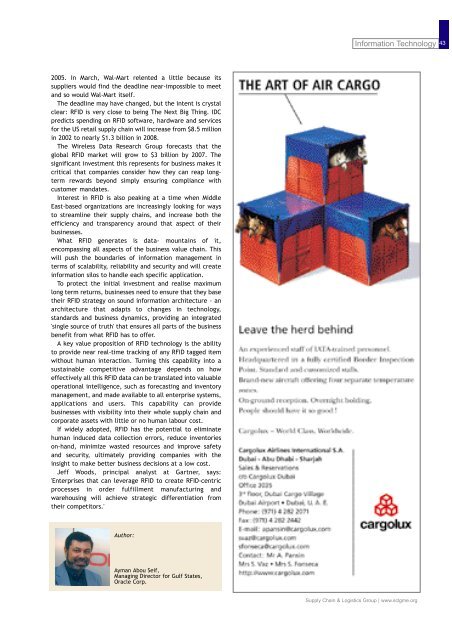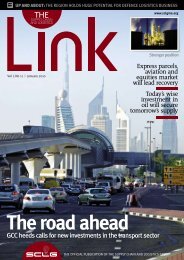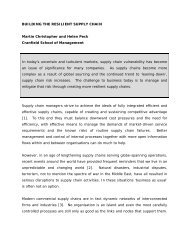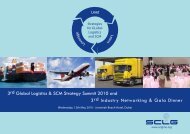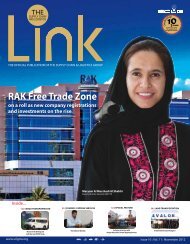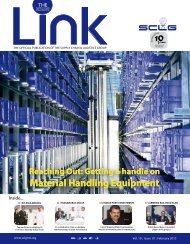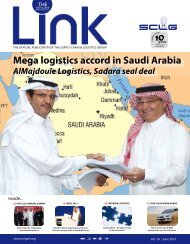Create successful ePaper yourself
Turn your PDF publications into a flip-book with our unique Google optimized e-Paper software.
Information Technology<br />
43<br />
2005. In March, Wal-Mart relented a little because its<br />
suppliers would find the deadline near-impossible to meet<br />
and so would Wal-Mart itself.<br />
The deadline <strong>may</strong> have changed, but the intent is crystal<br />
clear: RFID is very close to being The Next Big Thing. IDC<br />
predicts spending on RFID software, hardware and services<br />
for the US retail supply chain will increase from $8.5 million<br />
in 2002 to nearly $1.3 billion in 2008.<br />
The Wireless Data Research Group forecasts that the<br />
global RFID market will grow to $3 billion by 2007. The<br />
significant investment this represents for business makes it<br />
critical that companies consider how they can reap longterm<br />
rewards beyond simply ensuring compliance with<br />
customer mandates.<br />
Interest in RFID is also peaking at a time when Middle<br />
East-based organizations are increasingly looking for ways<br />
to streamline their supply chains, and increase both the<br />
efficiency and transparency around that aspect of their<br />
businesses.<br />
What RFID generates is data- mountains of it,<br />
encompassing all aspects of the business value chain. This<br />
will push the boundaries of information management in<br />
terms of scalability, reliability and security and will create<br />
information silos to handle each specific application.<br />
To protect the initial investment and realise maximum<br />
long term returns, businesses need to ensure that they base<br />
their RFID strategy on sound information architecture - an<br />
architecture that adapts to changes in technology,<br />
standards and business dynamics, providing an integrated<br />
'single source of truth' that ensures all parts of the business<br />
benefit from what RFID has to offer.<br />
A key value proposition of RFID technology is the ability<br />
to provide near real-time tracking of any RFID tagged item<br />
without human interaction. Turning this capability into a<br />
sustainable competitive advantage depends on how<br />
effectively all this RFID data can be translated into valuable<br />
operational intelligence, such as forecasting and inventory<br />
management, and made available to all enterprise systems,<br />
applications and users. This capability can provide<br />
businesses with visibility into their whole supply chain and<br />
corporate assets with little or no human labour cost.<br />
If widely adopted, RFID has the potential to eliminate<br />
human induced data collection errors, reduce inventories<br />
on-hand, minimize wasted resources and improve safety<br />
and security, ultimately providing companies with the<br />
insight to make better business decisions at a low cost.<br />
Jeff Woods, principal analyst at Gartner, says:<br />
'Enterprises that can leverage RFID to create RFID-centric<br />
processes in order fulfillment manufacturing and<br />
warehousing will achieve strategic differentiation from<br />
their competitors.'<br />
Author:<br />
Ayman Abou Seif,<br />
Managing Director for Gulf States,<br />
Oracle Corp.<br />
Supply Chain & Logistics Group | www.sclgme.org


